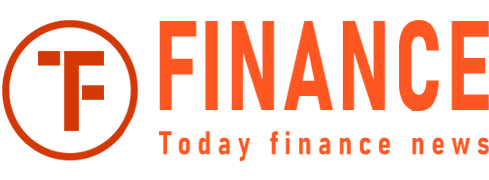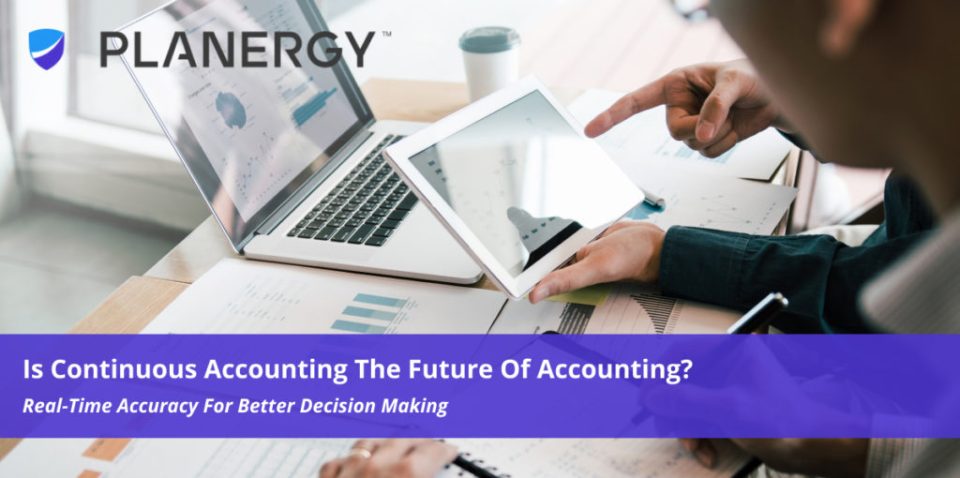Is Steady Accounting the Way forward for Accounting?
The accounting course of was by no means designed for effectivity. In conventional accounting, companies are compelled to attend till month finish to enter all of their accounting transactions, typically utilizing spreadsheets to run experiences.
In lots of circumstances, guide processes and a time-consuming month-end shut course of stay a burden suffered by accounting departments and bookkeepers usually. And due to this deal with the month-end shut course of and period-end duties, your accounting group has restricted entry to correct reporting earlier than closing the accounting interval.
To make issues worse, the time spent on month-end closing can rapidly add up, leaving you short-staffed for days, whereas your staff battle to deal with stacks of payments, invoices, receipts, and financial institution reconciliations, whereas you find yourself with a historic view of your accounting transactions that don’t replicate your precise present balances.
For instance, for those who shut the month of January on February fifth, your basic ledger steadiness will replicate your account balances as of January 31, not bearing in mind how a lot cash you’ve disbursed or collected the primary 5 days of February.
In case you’re utilizing cloud-based accounting software program resembling QuickBooks, FreshBooks, or Xero, you’re already utilizing a type of steady accounting for those who’ve linked your banking establishments to your software program. This connectivity routinely updates your accounts every day, resembling decreasing your financial institution steadiness when a invoice has been paid or rising the steadiness when a deposit has been obtained.
In case you’re uninterested in spending days reconciling accounts and getting into journal entries, you might be a superb candidate for steady accounting.
What’s steady accounting?
Whereas conventional accounting strategies full nearly all of processes on the finish of an accounting interval, whether or not it’s month-to-month, quarterly, or yearly, steady accounting leverages new expertise to automate nearly all of repetitive duties that make up nearly all of the month-end shut course of. Although some guide duties will stay, automating nearly all of beforehand guide processes will increase accuracy, whereas decreasing workloads; releasing up accountants and bookkeepers for extra necessary duties.
However maybe an important profit finance professionals obtain from utilizing steady accounting is that relatively than performing nearly all of accounting duties at month-end, accounting transactions are accomplished all through the accounting interval, offering companies with a real-time take a look at their funds all through the month, relatively than ready till transactions have been posted at month-end.
For instance, once you use an digital methodology to pay a invoice, resembling an ACH switch or an digital test, utilizing steady accounting, you may instantly account for that expense, relatively than ready till you obtain your financial institution assertion to publish the expense. This immediacy permits you to view your entire account balances in real-time relatively than ready till month-end to replace your account balances.
Steady accounting shouldn’t be good. There’ll at all times be changes that may must be processed manually. However they are going to be far fewer for those who use steady accounting to handle your transactions all through the month.
Benefits of utilizing steady accounting
These are only a few of some great benefits of utilizing steady accounting in your corporation.
- Error discount – Processing transactions manually at all times raises the potential of errors. Utilizing steady accounting, transactions are entered as they happen, relatively than at month-end, rising information integrity whereas decreasing errors.
- Actual-time information – You spend hours if not days processing your entire month-end transactions solely to try experiences that give you historic balances – not present ones. Steady accounting offers you with real-time monetary reporting information, permitting you to make extra knowledgeable choices.
- A extra streamlined workflow – In case you or your staff spend nearly all of your time getting into your accounting transactions the final week of the month, steady accounting can eradicate the bottleneck, offering a extra streamlined and constant workflow all through the month.
- Higher evaluation – To investigate monetary information correctly, you want entry to each historic and present information. Steady accounting offers you entry to each.
- Extra knowledgeable decision-making functionality – When making key enterprise choices, you need to have entry to real-time numbers, not simply historic information.
The continual shut is a part of steady accounting and refers back to the capacity to constantly ‘shut’ your accounts all through the accounting cycle.
What’s the steady shut?
The continual shut is a part of steady accounting and refers back to the capacity to constantly ‘shut’ your accounts all through the accounting cycle. Although the phrases steady accounting and steady shut are sometimes used interchangeably, steady shut focuses strictly on the power to carry out a “delicate shut” at any time, relatively than at month-end.
Utilizing automation and built-in expertise, the continual shut information transactions as they happen, not on the finish of the accounting interval. This course of ensures that account balances are correct and never over or understated: a frequent prevalence when utilizing a extra conventional accounting system.
Benefits of the continual shut
Like steady accounting, the continual shut affords quite a few benefits to companies together with the next.
Improved information accuracy: Errors occur, and so long as you’re utilizing guide transaction processing, the chance of errors stays excessive. However even after automating nearly all of your processes, errors nonetheless occur, albeit sometimes. However utilizing a steady closing, these errors are extra apt to be caught instantly relatively than proceed for quite a few accounting durations.
Higher fraud detector: Whenever you’re capable of evaluate transactions and account balances every day, you’re more likely to identify doubtlessly fraudulent transactions.
Comfortable closes: The necessity to carry out a delicate or on-demand shut could also be rare, but when you want to present documentation to your financial institution for a mortgage or an investor needs to see present monetary statements, you’ll have the ability to present these in a snap, with utterly present information.
Decreased workers burnout: Nobody will happier with steady closing than your accounting workers, who can now spend their time doing accounting work relatively than repetitive duties that may boring the senses.
Higher compliance: Accounting and compliance go hand in hand, and utilizing steady closing affords a degree of transparency that conventional accounting doesn’t, making it a lot simpler for a enterprise to turn out to be and stay compliant with related accounting statutes.
Steady monetary administration
Planning for and managing enterprise funds shouldn’t be one thing that may be executed yearly, and even as soon as a month. As an alternative, it needs to be a continuing course of. That is notably necessary when budgeting or forecasting. Would you relatively use final interval’s accounting numbers or numbers that replicate up-to-date data?
Whereas historically, budgets and forecasts have been ready at year-end for the upcoming 12 months, isn’t it higher to arrange a finances that may modify in real-time to your present earnings and expense ranges?
For instance, Mark is the CFO of Woodworks; a multi-million greenback enterprise that manufactures wooden flooring. Mark, alongside together with his division heads, start to arrange the 2022 finances in November, utilizing the numbers from their newest monetary statements, which have been run in October.
What these numbers don’t replicate is that pricing for the wooden planks mandatory for manufacturing their merchandise has gone up in worth within the final month. Demand has additionally risen, requiring a big quantity of extra time from the manufacturing facility staff. Whereas the pinnacle of producing is current within the conferences, he has little entry to the whole elevated labor prices or the elevated price of lumber itself. This lack of expertise leads to a finances that’s wildly inaccurate for the upcoming 12 months, severely understating each the price of provides in addition to the price of labor required to supply a completed product. This inaccuracy results in a misstated price of products bought, successfully decreasing Woodworks’ revenue for 2022.
If Mark’s enterprise was utilizing steady accounting, his workers would have the ability to produce a monetary assertion in real-time that may replicate each the elevated price of provides in addition to the elevated labor prices, permitting them to arrange a finances or monetary forecast that features each.
change to steady accounting
If your corporation continues to be slowed down in guide techniques, it may be time to think about making the change to steady accounting. Implementing steady accounting is kind of straightforward for those who observe these easy steps.
- Make the transfer to the cloud. In case you’re already utilizing cloud-based accounting software program, nice. If not, you’ll need to take this primary step. Steady accounting depends on automated expertise, that means that to automate your accounting processes, you’ll first must be cloud-based. One other good thing about shifting to the cloud is enabling the whole finance group to work from any location.
- Join your financial institution accounts to your accounting software program. It is a easy step and one that almost all accounting software program functions supply. By connecting your financial institution accounts to your monetary system, you’ll have the ability to account for financial transactions in real-time, which might be mirrored in your account balances.
- Institute some real-time spending insights. Notably necessary for companies that buy numerous provides for his or her enterprise, resembling producers or distributors, automating your spending, from the preliminary buy order to the seller cost can go a great distance in direction of offering an extra degree of transparency whereas additionally conserving your books updated in real-time.
- Use built-in expertise. It’s pointless to buy a spending software program utility if it doesn’t combine together with your accounting or ERP system. Creating a very built-in system reduces the variety of guide transactions you want to course of usually, will increase accuracy, and eliminates the necessity to enter information into two or extra separate functions.
Robotic course of automation and synthetic intelligence are the way forward for accounting. Fortunately, this new strategy to accounting duties is accessible no matter what accounting calendar your corporation operates on. And when you get began with steady accounting and course of automation, you’ll by no means look again.
,

